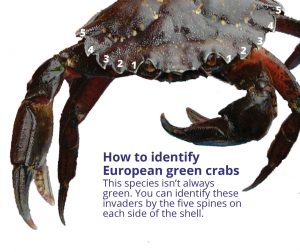
Twenty-five years ago this year, the Council released its first study on the threat of marine invasive species to Prince William Sound. The researchers determined that the biggest source of risk was the ballast water discharged from the oil tankers arriving in Prince William Sound.
Ballast water is sea water that the tanker takes on when they are not carrying oil. This helps stabilize the vessel during ocean voyages. Larvae of marine species can end up in the water. Tankers may release this water straight into Port Valdez if it is carried in clean tanks, segregated from the oil and not contaminated.
This program has changed through the years with advances in science and technology.
Here are a few highlights:
1996
Council conducts first ever comprehensive study on the threat of invasive species in high-latitude, cold water ecosystems. Researchers confirm that Prince William Sound is at risk of invasion.
Late 1990s
Council studies sources of ballast water and whether exchanging ballast water at sea is effective at reducing high risk coastal species.
Early 2000s
European green crab is identified as a species of concern. The Council starts supporting monitoring for these invaders.
Mid-2000s
New regulations require vessels to exchange ballast water while at sea; however, Prince William Sound tankers are exempt.
Council studies four species of concern to determine whether they could survive in Prince William Sound. All could survive* in parts of the region.
-
- Green crab, Carcinus maenas
- Barnacle, Amphibalanus improvisus
- Snail, Littorina saxatilis
- Tunicate, Styela clava
- Northward Spread of Marine Nonindigenous Species along Western North America
*The study notes that a warming climate would likely result in a more suitable habitat.
Late 2000s
Council begins monitoring for invasive tunicates.
Council studies risk of invasion from biofouling (attached to hull of tanker).
- Characterizing Risk Associated with Vessel Fouling and Nonindigenous Species in Prince William Sound
Early 2010s
Data from monitoring efforts show that invasive species are moving north.
Mid-2010s
Council study of federal and state policies governing ballast water shows regulations are varied and complex.
U.S. Coast Guard approves first on-board treatments for ballast water.
Late 2010s-present
Council trials genetic analysis of plankton samples to help monitor for invasive species. Techniques found to be effective.
- Metagenetic Analysis of 2017 Plankton Samples from Prince William Sound, Alaska
- Bioblitz 2016 Re-assessing Marine Invasions In Valdez, Prince William Sound, Alaska
Want more?
Details and additional reports are available in the Marine Invasive Species section of our website.